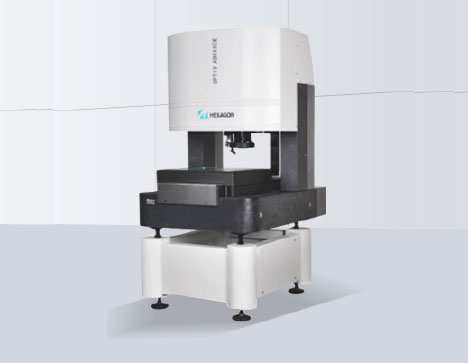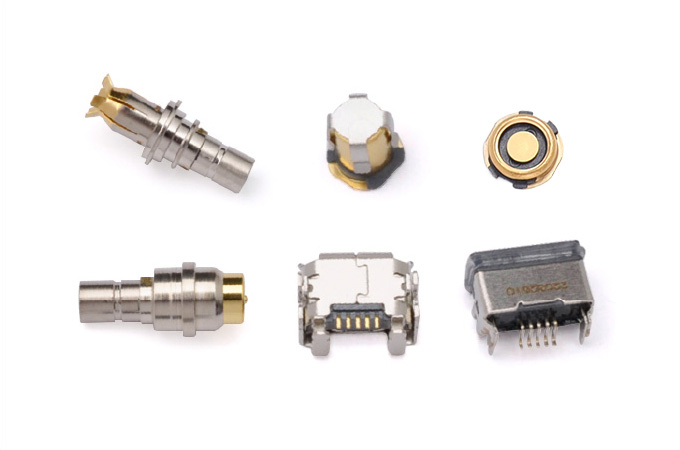Xinhua, Beijing, July 6 (Zhao Qiuyue) share the experience of "going to sea" of the Internet of things and look forward to the development prospect of the Internet of things. Recently, the seminar "sailing to sea - 2022 innovative technology and application of the Internet of things" was held in the form of a combination of online and offline
Lu chuncong, President of China Industrial Internet Research Institute, said at the seminar that 5g is an important component and key enabling technology of the digital economy, and it is also the core area of new infrastructure. Industrial 5g module is a special module that provides stable 5g network access capability for industrial equipment and supports industrial network protocols and interfaces. It is an important foundation for building the underlying link of industrial field IOT based on 5g technology and accelerating the construction of new industrial networks. In the past three years, with the gradual expansion of the scope of application, the industrialization of industrial 5g modules has continued to accelerate< br />

The picture shows Lu chuncong, President of China Industrial Internet Research Institute
The industrialization of industrial 5g modules has made positive progress
In the past three years since 5g was put into commercial use, the industrialization of industrial 5g modules in China has made positive progress. First, industry standards continue to deepen. According to Lu chuncong, recently the international standards organization 3GPP announced that the R17 standard was officially frozen, marking the successful conclusion of the first stage of 5g technology evolution. 5g system enhancements have complete technical support. Through the enhancement of new terminals, networks and functions, 5g industrial application scenarios will continue to deepen and expand. At present, industrial 5g modules developed based on R15 and R16 can support microsecond synchronization accuracy, millisecond end-to-end delay, and "five 9s" reliability performance requirements. The module development based on R17 will be aimed at low power consumption, low cost, large connection and wide coverage application scenarios, such as the application of the lightweight 5g NR (redcap), which can meet the requirements of 20MHz bandwidth, 150Mbps downlink rate and 50Mbps uplink rate< br />
Second, the price of products is declining. Globally, the price of 5g industry module has dropped to $70-80, and the industrial CPE is less than $400. Lu chuncong said that with the redcap standard in place, it is expected to drive the module cost below $20. In the domestic market, the module price has dropped to 500 yuan. Domestic mainstream module manufacturers are carrying out research and development of tailored 5g module products, and it is expected that the cost will be further reduced< br />
Third, the supply capacity has been steadily improved. According to the global association of mobile providers (GSA), as of January 2022, 174 5g modules have been released worldwide, second only to the release of mobile phones and fixed access CPE terminals. In addition, according to the data of industry research institution counterpoint, in 2021, the total shipment and market scale of cellular IOT modules were 420million pieces and 31.43 billion yuan respectively. By the first quarter of this year, module shipments had increased by 35% year-on-year. The top three domestic enterprises, mobile communications, guanghetong and rihai intelligence, account for more than half of the world's shipments. Professional companies affiliated to China Mobile Internet of things, Unicom Internet of things and other telecom operators intensively launch multi type 5g module products based on their own advantages, support industry terminal manufacturers to carry out the development of multi category 5g terminals, and continue to deepen industrial applications< br />
"We should also see that the economy, versatility and reliability of industrial 5g modules are still one of the important bottlenecks restricting the large-scale application of industrial 5g. Under the influence of multiple factors such as fragmented market, standard introduction period and chip supply, it is difficult to increase the sales of single module products, it is difficult to dilute the production and design costs, and the expansion of application scenarios and demand scope urgently needs to be further accelerated." Lu chuncong said< br />
Promote the construction of 5g full connection factory
Lu chuncong believes that the construction of 5g fully connected factory is an important measure and the only way for the in-depth development of "5g+ industrial Internet". The core lies in building the network support capacity of the industrial site, creating a flexible networking mode based on 5g technology, and improving the integration and cooperation ability of "cloud edge", which will provide rich application scenarios and broad industrial space for the development of 5g modules. To promote the construction of 5g fully connected factories, we need to carry out in accordance with the idea of grading and separating industries< br />
Among them, the idea of hierarchical application refers to that since the construction of 5g fully connected factory is difficult to be achieved in one step, it is necessary to comprehensively consider the dual factors of technological development and economic cost, comply with the objective law of 5g technology evolution iteration and gradual introduction of standards, and also combine the objective basis of industrial development such as the digitalization level of enterprises and the complexity of technological processes< br />
According to Lu chuncong, according to the technical performance requirements of industrial networks, "from single to multiple", and the application links "from the periphery to the core", the labor liberation of "eyes, hands and brains" in industrial sites can be gradually realized, which can be divided into five levels. Level 1 refers to visual auxiliary connection, focusing on video, HD image and other acquisition and transmission needs, and relying on 5g high-speed performance to meet real-time monitoring, quality inspection and other working scenes; Level 2 refers to partial autonomous connection, facing the remote control needs of vehicles and vehicles, and relying on 5g high speed and low time delay, it can meet the working scenarios of unmanned intelligent logistics and intelligent sorting; Level 3 refers to enhancing autonomous connection, facing the needs of robot control and equipment fault detection, and relying on high-speed, low time delay, large connection performance to meet the working scenarios such as equipment predictive maintenance and accurate dynamic operation; Level 4 refers to highly autonomous connection, which is oriented to equipment production line, process coordination and industrial control equipment access, and relies on 5g high-speed, low delay, large connection and high reliability to meet the working scenarios of collaborative research and development design, equipment collaborative operation and so on; Level 5 refers to fully autonomous connection, relying on higher bandwidth, lower delay and higher precision industrial network connection to carry out the whole process and all link applications that meet the overall needs of enterprise production, operation and management< br />
The meaning of promoting by industry is that it is difficult to promote 5g fully connected factories. China's industry is large and has many categories. It is difficult for one prescription to cure all diseases. It needs to be deepened by one industry. For key industries with good digital foundation and high interconnection demand, such as manufacturing, mining, power industry, port logistics industry, give priority to promoting the construction of 5g fully connected factories. According to the characteristics of the industry, we should make systematic efforts to promote differentiation, and promote the construction of a number of general industrial solutions within the industrial cluster< br />
Make positive contributions to the transformation and upgrading of industrial digitalization
China Industrial Internet Research Institute has been actively carrying out research on technologies, standards, solutions and related testing and certification in the integrated application of "5g+ industrial Internet". According to Lu chuncong, China Industrial Internet Research Institute, together with relevant enterprises and universities, jointly promote the research on 5g industry application technology in 5g cloud PLC, 5g fully connected factory networking, 5g edge intelligent control system, 5g+tsn, etc. At the same time, a number of 5g terminal products and networking solutions have been tested, and a number of verification and testing capabilities have been formed< br />
Among them, verification tests are carried out for the key technologies involved in the 5g fully connected factory networking scheme, such as network slicing, edge computing, nfv, etc; Carry out protocol, RF, RRM and performance related tests for 5g access devices such as industrial gateways, CPE, terminals and modules; Carry out actual factory network coverage and service quality evaluation, including factory 5g signal coverage test, electromagnetic interference test, end-to-end delay, jitter, throughput, packet loss and other performance tests< br />
"Our institute will accelerate the construction of new industrial network laboratory, and is willing to work with all walks of life to jointly carry out the research and development of key technical products such as industrial 5g modules, jointly promote the demonstration construction of 5g fully connected factories and the industrial application of" 5g+ industrial Internet ", and make positive contributions to the transformation and upgrading of industrial digitalization." Lu chuncong said< br />

























 2022.07.06
2022.07.06